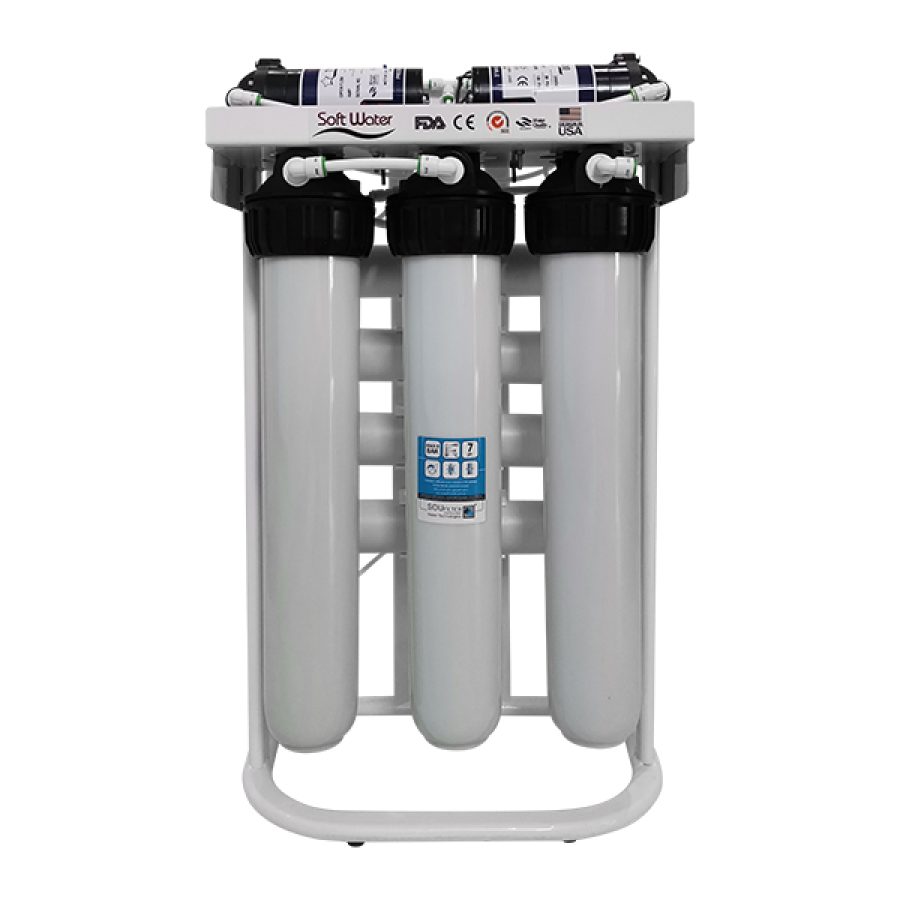Semi-industrial water purifier is a type of reverse osmosis (RO) water purifier that is designed for use beyond household use.
Semi-industrial water purifiers are usually designed and manufactured with a capacity of 200 gallons (800 liters), 400 gallons (1600 liters) and 500 gallons (2000 liters) per day.
Semi-industrial water purifiers are used in several places, including the following:
Restaurants
Coffee shops
Companies
4- Workshops and factories
Cooling towers
Pre-treatment of distilled water production systems
Laboratories
Ice makers
9- Car washes
10-Food and beverage industries
11- Some houses or villas that have high consumption of drinking water for various reasons.
Semi-industrial water purifiers purify water in 5 stages by reverse osmosis explained below:
Step 1: Fiber pretreatment to remove water particles with dimensions more than 5 microns
Second stage: granular carbon filter with a completely organic base to remove chlorine and organic matter
Step 3: activated carbon block filter or fiber filter to remove suspended particles with dimensions more than 1 micron
Fourth stage: RO membranes to remove more than 99.9% of salts and water hardness, which will be two, four or five membranes depending on the capacity of the device.
Step 5: Linear post carbon filter containing activated carbon granules with a completely organic base to improve the final taste and smell of water for use
The output of the semi-industrial water purifier must be stored in a tank, which can usually be done in one of two ways:
Polyethylene storage tank with a floater: In this method, the water from the semi-industrial water purifier runs into the storage tank and by consuming it and lowering the floater, the production of purified water begins and the tank is filled again. In this case, usually a tap is installed on the body of the tank or the water is transferred to other consumption points by a pump.
Pressure tank: Water purified by a semi-industrial device can enter the diaphragm pressure tank. As is the case with household water purifiers, when the tap is turned on, the water in the tank is forced out by the diaphragm air pressure and is replaced with fresh purified water.




